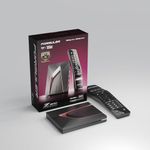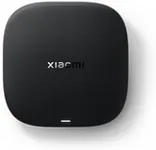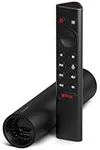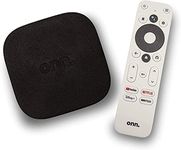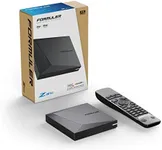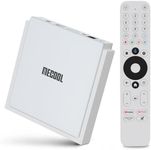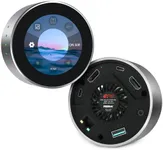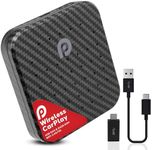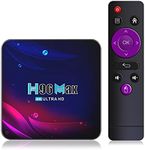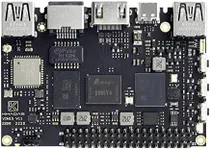Buying Guide for the Best TV Android Boxes
When choosing an Android TV box, it's important to consider several key specifications to ensure you get the best performance and features for your needs. Android TV boxes can turn any TV into a smart TV, allowing you to stream content, play games, and use various apps. Understanding the key specs will help you make an informed decision and get the most out of your purchase.Processor (CPU)The processor, or CPU, is the brain of the Android TV box. It determines how fast and efficiently the device can run apps and perform tasks. A more powerful processor will provide smoother performance, especially when streaming high-definition content or running multiple apps simultaneously. Processors are often categorized by the number of cores (dual-core, quad-core, octa-core) and their clock speed (measured in GHz). For basic streaming and casual use, a quad-core processor should suffice. For more demanding tasks like gaming or 4K streaming, an octa-core processor is recommended.
RAMRAM (Random Access Memory) is crucial for multitasking and overall performance. It allows the Android TV box to run multiple apps smoothly without slowing down. More RAM means better performance, especially when switching between apps or running resource-intensive applications. Android TV boxes typically come with 2GB, 4GB, or 8GB of RAM. For basic streaming and everyday use, 2GB of RAM is usually enough. However, for a more seamless experience and future-proofing, 4GB or more is recommended.
StorageStorage capacity determines how much content and how many apps you can store on your Android TV box. It is usually measured in gigabytes (GB). Some devices also support expandable storage via microSD cards or USB drives. Common storage options range from 8GB to 64GB. If you plan to install many apps or store a lot of media files, opt for a device with at least 32GB of storage. For basic use, 16GB might be sufficient, especially if the device supports expandable storage.
Operating System (OS) VersionThe operating system version affects the user interface, app compatibility, and overall performance of the Android TV box. Newer versions of Android offer better features, security updates, and improved performance. Look for a device running at least Android 9.0 (Pie) or later. This ensures you have access to the latest apps and features. Older versions may still work but might not support newer apps or updates.
Connectivity OptionsConnectivity options include Wi-Fi, Ethernet, Bluetooth, and various ports (HDMI, USB, etc.). These determine how you can connect the Android TV box to the internet, other devices, and your TV. For a stable and fast internet connection, especially for streaming 4K content, an Ethernet port is ideal. Dual-band Wi-Fi (2.4GHz and 5GHz) is also beneficial for wireless connections. Bluetooth allows you to connect peripherals like keyboards, mice, and game controllers. Ensure the device has the necessary ports for your needs, such as HDMI for video output and USB for external storage or accessories.
Video and Audio SupportVideo and audio support determine the quality of the content you can watch and listen to. Look for support for 4K resolution if you have a 4K TV, as well as HDR (High Dynamic Range) for better color and contrast. Audio support for Dolby Digital or DTS can enhance your viewing experience with better sound quality. If you have a high-end home theater system, ensure the Android TV box supports the necessary audio formats.
User Interface and Remote ControlThe user interface (UI) and remote control affect how easy and enjoyable the device is to use. A well-designed UI makes it easy to navigate through apps and settings. Some Android TV boxes come with voice control remotes, which can be very convenient for searching content and controlling the device. Consider a device with a user-friendly interface and a remote that suits your preferences, whether it's a simple remote or one with advanced features like voice control and programmable buttons.

